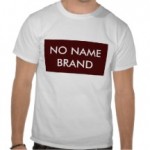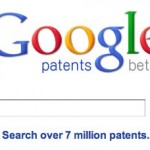 This article, by Francis Hagel, first appeared in Intellectual Property Magazine. It provides strong guidance, in checklist form, for those seeking to beat the odds that the patents they obtain will actually generate strategic value. Mr. Hagel is an IP strategy advisor from France. The article is reproduced with permission.
"Suggestions for strategic drafting of patent applications"
In the drafting of a patent application, a practitioner starts from a blank page[i]. He/she enjoys the greatest freedom for shaping its content on the basis of the information at hand concerning the invention, its context and the prior art of interest, within the constraints set forth by patent law in the country of filing, keeping in mind the specifics of patent law in the major markets for the invention. This freedom applies to all parts of the application : definition of the
This article, by Francis Hagel, first appeared in Intellectual Property Magazine. It provides strong guidance, in checklist form, for those seeking to beat the odds that the patents they obtain will actually generate strategic value. Mr. Hagel is an IP strategy advisor from France. The article is reproduced with permission.
"Suggestions for strategic drafting of patent applications"
In the drafting of a patent application, a practitioner starts from a blank page[i]. He/she enjoys the greatest freedom for shaping its content on the basis of the information at hand concerning the invention, its context and the prior art of interest, within the constraints set forth by patent law in the country of filing, keeping in mind the specifics of patent law in the major markets for the invention. This freedom applies to all parts of the application : definition of the
Strategic Patenting: How To Get it Right (Guest Post)
Software Patent Apocalypse?
 The data coming out of the district courts and the USPTO make it fairly apparent that the "Software Patent Apocalypse" may be here, at least for the foreseeable future. This result has been widely predicted since the US Supreme Court decided Alice Corp. Pty. Ltd. v. CLS Bank International earlier in 2014, but facts now are coming out to demonstrate that the next few years will be tough for those who seek to obtain patent protection for inventions that fall into the realm of software.
The data coming out of the district courts and the USPTO make it fairly apparent that the "Software Patent Apocalypse" may be here, at least for the foreseeable future. This result has been widely predicted since the US Supreme Court decided Alice Corp. Pty. Ltd. v. CLS Bank International earlier in 2014, but facts now are coming out to demonstrate that the next few years will be tough for those who seek to obtain patent protection for inventions that fall into the realm of software.
We saw initial data from the district courts a couple of months ago when Timothy Lee of Vox.com presented data showing that a number of software patents had been found invalid as failing to claim patentable subject matter (a "Section 101 rejection" to us patent types) under the Alice rationale in
Free and Low Cost Patent Search and Analysis Tools: Who Needs Expensive Name Brand Products?
(NOTE: At the end of this post is a detailed spreadsheet that lists the free and low cost tools that I use regularly in my IP strategy practice. At the request of a group of IP strategy professionals with whom I network, I will be giving a presentation on these tools at a local event. I thought that readers of this blog would also appreciate learning about how these tools can add high value at a low to minimal cost.)
 In private conversations, some of my corporate peers inform me that they pay $1000's per year (or even per quarter for larger companies) for access to "name brand" patent search tools that nonetheless do not contain accurate and up to date information. For example, a client tells me that one of these expensive tools fails to update USPTO records on
In private conversations, some of my corporate peers inform me that they pay $1000's per year (or even per quarter for larger companies) for access to "name brand" patent search tools that nonetheless do not contain accurate and up to date information. For example, a client tells me that one of these expensive tools fails to update USPTO records on
Why the IP Law Firm Business Model is Broken And What I Am Doing About It
As a former IP law firm shareholder and senior corporate lawyer, I know all too well the expense required to start and maintain an IP law practice. Not only are IP lawyers of all levels of experience paid handsomely, but so are the highly skilled paralegals, docket clerks and administrative professionals traditionally required create the infrastructure needed to handle the myriad of details involved in an IP law practice. Of course, this expensive infrastructure must be sustaining, so while a lawyer serves today’s clients, her eye must also be on finding the next client because payroll and rent obligations don’t take a holiday when clients do. This "feed the beast" nature of the IP law practice model was a primary reason that I decided several years ago that I would not again work in the traditional practice of law. How could I? The standard legal service framework required me to build
Google Changes the Game Again–This Time for Patent Owners and Those Who Serve Them
 Patrick Anderson of the great Gametime IP blog reported the details of Google's new prior art searching tool*. This is such important news, I thought it important to repeat it in a separate post. Patrick provides detailed instructions for how to use the Google patent searching tool, and I will not repeat that information here. This post provides commentary on why I think this is a very good development for the patent world. Google's original announcement on its blog is here. It does not appear coincidental that Google is upgrading its patent searching capabilities: in this press release from June 2010 we are informed of the partnership between Google and the USPTO to increase the amount of US patent information available to the public.
When used correctly, Google's tool can help "democratize" the patent analysis process
Patrick Anderson of the great Gametime IP blog reported the details of Google's new prior art searching tool*. This is such important news, I thought it important to repeat it in a separate post. Patrick provides detailed instructions for how to use the Google patent searching tool, and I will not repeat that information here. This post provides commentary on why I think this is a very good development for the patent world. Google's original announcement on its blog is here. It does not appear coincidental that Google is upgrading its patent searching capabilities: in this press release from June 2010 we are informed of the partnership between Google and the USPTO to increase the amount of US patent information available to the public.
When used correctly, Google's tool can help "democratize" the patent analysis process
How to Improve your Innovation ROI with Early Stage Patent Expertise: In Depth Management Article
This article, How to Improve your Innovation ROI with Early Stage Patent Expertise, was published in late 2010 as a pay for download article in Innovation Management Magazine. It later became free for download, and I can share it with readers in this link. I hope those responsible for creating value from IP in their organizations can find the insights in this article helpful. Here is a synopsis:
Innovation teams are often removed organizationally from a company’s patent matters. This can mean that corporate innovation processes move forward with little or no consideration of whether competitors can legally “knock off” the resulting consumer offering. Companies may then not attain expected ROI because competitors can legally copy the innovation—be it a product, technology or otherwise—without incurring legal liability. It may not always be necessary to protect innovation
A Startup Company’s Experiences with Open Innovation-Part 1: Dealing with a Large Company Having Small Innovation Goals
For the past several months, I have been at the helm of Evgentech, a startup company with game-changing battery charging methodology. Our technology was developed by young men who did not come from a traditional engineering background and, even then, their discovery was a serendipitous result of the co-founders’ recognition of a new principle stemming from investigations initially directed toward something wholly different from battery charging. Put simply, Evgentech’s technology would not have been found if anyone--outsider or not--would have been looking for it. We are now bringing to market the first truly new battery charging paradigm in over 100 years. To put things in perspective, with Evgentech's technology, you will be able to charge your batteries in a fraction of the time possible with existing battery charging methodologies, which means you can charge your iPhone to "full" in as little as 20 minutes, as compared to the about 3-5
It’s Time for Your R & D Team to Stop Inventing and Start Innovating
In a recent post on his 15 Inno blog, Open Innovation guru Stefan Lindegaard presented the ostensibly nonsensical hypothesis: R & D leaders are often a "threat" to innovation. Stefan's post resulted from an interaction he had with a senior R & D person at a mid-sized tech company, who apparently adhered to the outdated notion that he and his scientists and engineers know more about the company's business than anyone else could possibly even try to know. As a result, this R & D leader believes that they cannot maximize (or even create) value for their organization by looking outside the confines of their existing R & D infrastructure to solve the company's pressing business problems. Reading this, R & D professionals might likely think: "What's this guy smoking? How can R & D be a threat to innovation?! We're the reason this company has any innovation at all.
False Marking Lawsuits are Real Problem for Business and Make Little Sense When Applied to Expired Patents
 The threat of false marking lawsuits has garnered much attention in the IP business press in the last couple of years. Companies of all sizes have been hit with qui tam actions (that is, suits brought by an individual or company on behalf of the US government to right wrongs done to the government, not the individual) where the basis of the action is the mis-marking of a product with an incorrect or expired patent number. Like a gold rush, these lawsuits have resulted in a number of legal entrepreneurs seeking out products that are incorrectly marked--usually by identification of expired patents, which is an easy thing to find--and their bringing suit against the offending companies. Indeed, there were over 500 false marking lawsuits filed in 2010, making this cause of action seem almost like a
The threat of false marking lawsuits has garnered much attention in the IP business press in the last couple of years. Companies of all sizes have been hit with qui tam actions (that is, suits brought by an individual or company on behalf of the US government to right wrongs done to the government, not the individual) where the basis of the action is the mis-marking of a product with an incorrect or expired patent number. Like a gold rush, these lawsuits have resulted in a number of legal entrepreneurs seeking out products that are incorrectly marked--usually by identification of expired patents, which is an easy thing to find--and their bringing suit against the offending companies. Indeed, there were over 500 false marking lawsuits filed in 2010, making this cause of action seem almost like a
Clients Save Money and Get Better Patents When Attorneys Use This Solution
As a "recovering patent lawyer," I now realize that I wasted a whole lot of my clients' money over the years because of the inherent inefficiencies that have been built into patent practice. In this regard, I wrote about the money wasted by old fashioned patent filing systems in this post a while back, a fact which I think dictates that clients insist that their lawyers adopt electronic filing systems. I have also written about the money wasted as a result of the inability of many clients to judge the value provided by their patent lawyers, which I believe is a result of information asymmetry. Another waste of money comes from the time needed to review patent filings during the drafting process. The highly technical nature of patent application and claim drafting requires detailed review of an application on multiple occasions prior to filing. Each review requires the time


